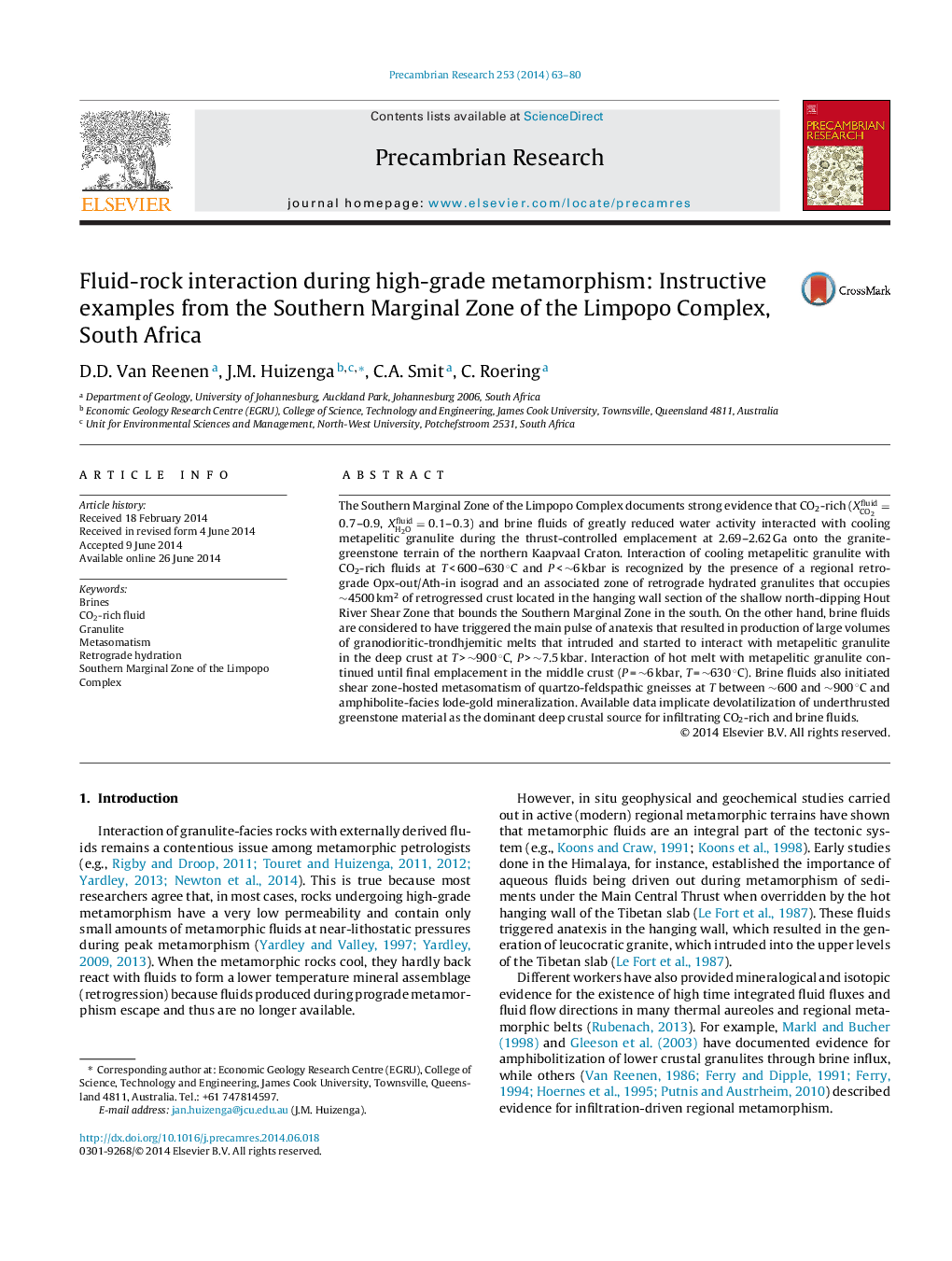| Article ID | Journal | Published Year | Pages | File Type |
|---|---|---|---|---|
| 4722932 | Precambrian Research | 2014 | 18 Pages |
Abstract
The Southern Marginal Zone of the Limpopo Complex documents strong evidence that CO2-rich (XCO2fluid=0.7-0.9, XH2Ofluid=0.1-0.3) and brine fluids of greatly reduced water activity interacted with cooling metapelitic granulite during the thrust-controlled emplacement at 2.69-2.62 Ga onto the granite-greenstone terrain of the northern Kaapvaal Craton. Interaction of cooling metapelitic granulite with CO2-rich fluids at T < 600-630 °C and P < â¼6 kbar is recognized by the presence of a regional retrograde Opx-out/Ath-in isograd and an associated zone of retrograde hydrated granulites that occupies â¼4500 km2 of retrogressed crust located in the hanging wall section of the shallow north-dipping Hout River Shear Zone that bounds the Southern Marginal Zone in the south. On the other hand, brine fluids are considered to have triggered the main pulse of anatexis that resulted in production of large volumes of granodioritic-trondhjemitic melts that intruded and started to interact with metapelitic granulite in the deep crust at T > â¼900 °C, P > â¼7.5 kbar. Interaction of hot melt with metapelitic granulite continued until final emplacement in the middle crust (P = â¼6 kbar, T = â¼630 °C). Brine fluids also initiated shear zone-hosted metasomatism of quartzo-feldspathic gneisses at T between â¼600 and â¼900 °C and amphibolite-facies lode-gold mineralization. Available data implicate devolatilization of underthrusted greenstone material as the dominant deep crustal source for infiltrating CO2-rich and brine fluids.
Keywords
Related Topics
Physical Sciences and Engineering
Earth and Planetary Sciences
Geochemistry and Petrology
Authors
D.D. Van Reenen, J.M. Huizenga, C.A. Smit, C. Roering,
